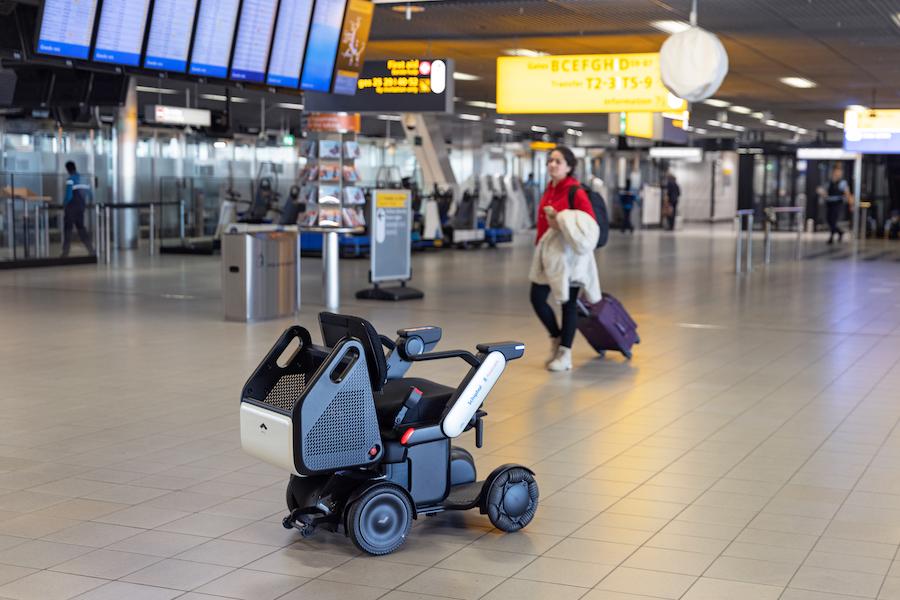
Amsterdam Airport Schiphol (AMS) has kicked off a one-week trial of autonomous wheelchairs that could augment or eventually replace staff passenger push services at the busy airport.
Schiphol and Axxicom Airport Caddy, which operates wheelchair push services at the airport, are trialing California-based WHILL’s Autonomous Vehicles Service to determine if the self-riding wheelchairs will be used permanently at AMS.
WHILL’s autonomous wheelchairs are already deployed at Japanese airports, including Tokyo Narita Airport (NRT) and Kansai Airport (KIX).
WHILL says the autonomous wheelchairs are operated via a touch panel. “This allows all customers to move comfortably through the large airport with ease, including the elderly, those who normally need wheelchair assistance, and anyone who is concerned about walking long distances due to their physical strength,” the company explains, noting its product can help large airports experiencing staffing shortages. “The recovery of the travel sector following the pandemic is putting additional pressure on existing push services as people return to traveling more frequently."
Schiphol says the short pilot program will see a number of passengers taken to their gate by the autonomous vehicles, adding: “The innovative vehicles support the current passenger assistants, resulting in more efficiency in their work... With the autonomous vehicles, we are exploring how travelers with reduced mobility can find their way independently and safely at the airport.”
Patricia Vitalis, Schiphol’s director of airport operations and aviation partnerships, says the autonomous wheelchairs could “future proof” the provision of wheelchair push services by ensuring staffing shortages, which plagued AMS and other airports last year, do not diminish the ability to provide assistance to passengers needing wheelchairs.
The WHILL autonomous wheelchairs feature a rear luggage rack for carryon bags, according to Axxicom Airport Caddy. A passenger using the wheelchair enters his or her desired airport destination—usually a boarding gate—via the touchscreen and then is taken there autonomously.
“The vehicle also has sensors that take into account other travelers, obstacles and the surrounding environment,” Axxicom Airport Caddy MD Vincent Kas says. “There is an emergency button on the vehicle and a seat belt to ensure safety. After arriving at the destination, the passenger disembarks … and the vehicle drives itself back to the starting point where new travelers can use it again.”
Schiphol says the autonomous wheelchairs could also benefit passengers who do not speak Dutch or English, for whom navigating through the airport can be challenge.




